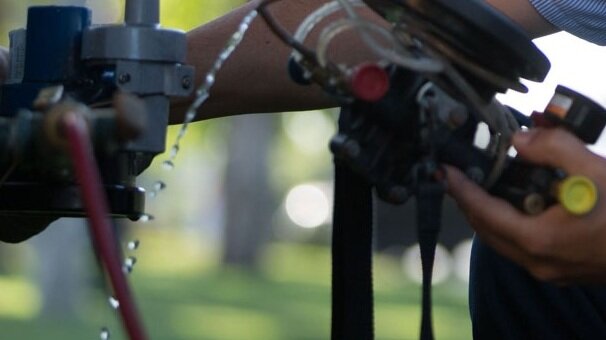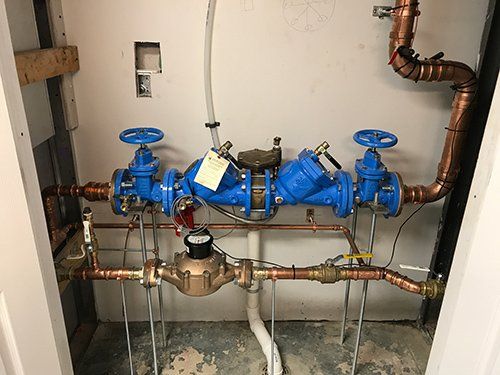Are Backflow Testing Critical for Ensuring Water Quality?
Are Backflow Testing Critical for Ensuring Water Quality?
Blog Article
The article author is making a few great pointers about Backflow Testing as a whole in the content underneath.

Yes, you need to backflow test your home's water supply to ensure that the water is devoid of toxic substances and hazardous levels of chemicals. You must not try to execute heartburn testing on your own because of the devices needed and room for error. We recommend that you call a professional plumber every couple of years to test your water.
What is Heartburn?
Simply put, backflow is when water moves upwards-- the contrary direction in the plumbing system. This is likewise known as "backpressure." When the water relocates this direction, it can mix with unsafe toxins and present a threat.
What Creates Heartburn?
A typical cause of backflow is a loss of water stress that causes the water to siphon back right into the water. An instance is cleaning out a paint pail using a hose pipe. You fill the paint pail up with water, leaving the hose in the container. After a long time, there is a loss in water pressure and the tube starts to suck the water back right into the water. As you can imagine, there are currently chemicals from the paint that are entering the water, possibly posing a danger. Lots of individuals are not even mindful of heartburn testing, yet there are several reasons why it's so crucial.
Backflow Screening is Needed by Regulation in Particular Cities
Depending on where you live, you could actually be called for by law to backflow test your legislation. Iowa City maintains a record of all buildings offered by the city's water supply. The city requires that specific "high-hazard" facilities undertake backflow screening. In some cases, houses such as houses and also apartment are impacted.
You Can Prevent Backflow
Dangerous heartburn is quickly avoidable if you have a specialist plumber mount a heartburn tool. If there is an active risk, the plumber will certainly additionally check for backflow and also determine. The main objective of a backflow device is to prevent water from streaming backwards into your water. Plumbing technicians mount the gadget on the pipelines in your house to ensure that the water only moves in the proper direction.
Heartburn Can Influence Both You and also Your City
Due to the fact that hazardous heartburn can affect the public water supply in enhancement to a solitary structure, lots of cities develop heartburn standards. Luckily, contemporary cities have backflow tools in place that protect the water supply that comes from the majority of houses as well as commercial properties. The real danger comes from irrigation systems, which can hurt the water system with harmful fertilizers, manure, and other chemicals.
Call a Plumber to Examine for Heartburn Before It is Too Late
While it may seem grim, polluted water can result in awful bacterial as well as viral infections that are hard to deal with. A plumbing company can rapidly evaluate your residence's water to identify if there are any unsafe chemical degrees. If you can stay clear of the anguish that comes from consuming alcohol contaminated water, the little financial investment is. And also if you do find that your water has high degrees of toxins, a plumber can easily install a backflow avoidance device.
Yes, you require to backflow examination your residence's water supply to make certain that the water is free of toxic substances and unsafe degrees of chemicals. A common reason of heartburn is a loss of water pressure that triggers the water to siphon back right into the water supply. After some time, there is a loss in water stress as well as the pipe begins to draw the water back right into the water supply. The main purpose of a heartburn tool is to avoid water from flowing backwards right into your water supply. Many cities develop backflow guidelines because hazardous backflow can affect the public water supply in addition to a solitary building.
WHY DOES BACKFLOW TESTING NEED TO BE DONE EVERY YEAR
What Is Backflow?
Toxic gas backing up into a building is one example of potential backflow issues, but backflow can occur in many other ways.
Backflow is generally referred to as the reversal of a liquid or gas in a plumbing system.
Most issues for the public occur with backflow resulting in contaminated drinking water. If you look up backflow issues online you’ll probably find references to “potable” water. That means drinking water.
There have been backflow issues in the past with drinking water. Chemicals, sewage and other contaminants have found their way into drinking water causing health issues for those that count on the fresh water.
What Causes Backflow?
In a residence or commercial building water generally flows one way. This normal flow is usually driven by consistent pressure in the water and waste system.
Anything that changes the normal pressure in the system can lead to backflow.
Fire hydrant use or malfunction can reverse the normal pressure in the system on a city line, but backflow can occur in a number of different ways.
Sometimes backpressure might be caused by someone using a garden hose and submerging the end of the hose in a pool of liquid. If pressure is lost the flow could reverse and contaminants could be released into the drinking water.
Anytime there is a connection between contaminants and the drinking water there is potential for a backflow issue. Sometimes these connections are not immediately obvious like the garden hose connecting to a building’s drinking water supply.
Backflow Regulations
The Environmental Protection Agency (EPA) provides guidelines and regulations for state and local governments regarding backflow. State and local governments also have their own guidelines and regulations for backflow prevention.
Arizona has its own backflow regulations.
Due to issues with backflow in the past, regulations require backflow preventer devices to be used in nearly all residential and commercial buildings.
A backflow preventer is a device that prevents backflow as cross-connection points where potential backflow issues may occur.
While backflow is not a common occurrence, preventers are in place to make sure there is no contamination should something malfunction or go wrong with a building’s water supply.

I'm very involved in What is Backflow Testing? and I really hope you enjoyed my blog entry. If you liked our blog post plz make sure you remember to share it. Kudos for your time. Visit again soon.
Click Here To Read More
Report this page